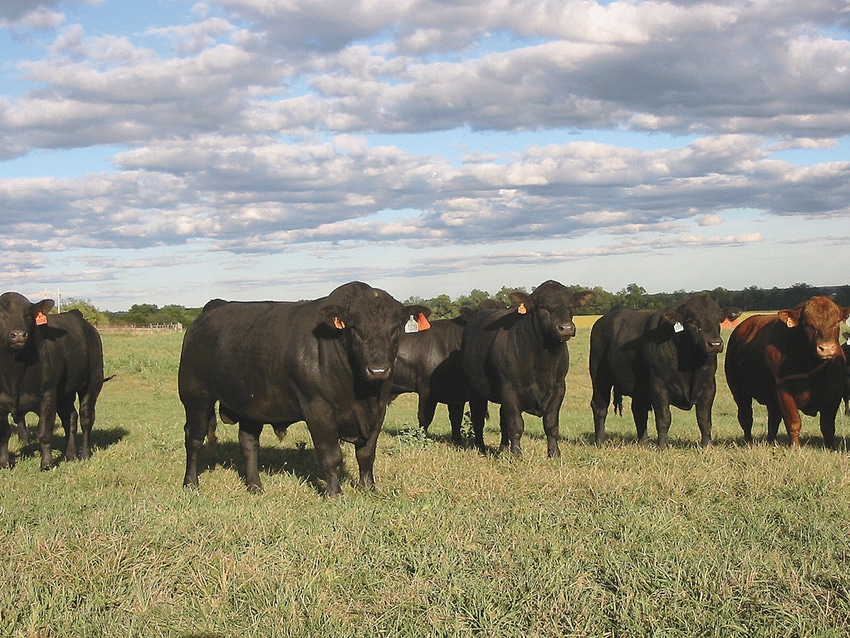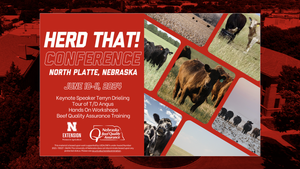Upping the accuracy with single-step genetic evaluation
As the art and science of genomics becomes more accurate, cow-calf producers benefit. While cow-calf producers won’t directly participate in genomic evaluation now that single-step evaluation is a reality, they’ll be able to buy bulls with more accurate and reliable EPDs from their seedstock suppliers.
January 2, 2017

“If you’re a breeder doing a lot of genotyping and phenotyping — you’re measuring all of the data in all of the traits — single-step genomic evaluation lets you leverage the accuracy from that immediately,” says Stephen Miller, director of genetic research for Angus Genetics Inc. (AGI). “I think that’s a strong component of why breeders may become even more active in genotyping than they have been so far.”
Miller is describing what he believes will be one of the results of the single-step beef cattle genetic evaluation currently being refined and tested by organizations with massive databases, including AGI and International Genetic Solutions (IGS), which is a collaboration of 12 breed associations.
For the American Angus Association (AAA), AGI conducts a single-breed genetic evaluation. AAA’s registry grows by about 300,000 annually. The AAA database for genetic evaluation includes weaning weights for 8.3 million animals and birth weights for 7.6 million, among a host of various phenotypes.
Conversely, Mahdi Saatchi, lead genomicist at IGS, explains the organization’s database includes more than 16 million animals — the largest multibreed beef cattle genetic evaluation system in the world — adding more than 400,000 each year.
Single-step genetic evaluation is meant to replace what is currently and usually a multistep process used to incorporate genomic information into the calculation of expected progeny differences (EPDs).

With this multistep approach, GE-EPDs are available only for genotyped animals. Including their information in genetic evaluation requires what’s termed a “training population” used to recalibrate prediction equations periodically. Suffice it to say, this is an added step that requires lots of time.
A shortcoming of the multistep approach is that selection bias can creep into the evaluation, since animals superior in genetic merit are the most likely ones to be genotyped. Saatchi adds that weighting estimates for the information included can be a primary source of biases.
Keep in mind that EPDs were already the gold standard of genetic prediction, even before genomic data was included in genetic evaluation.
More information, accuracy
As the term implies, single-step methodologies incorporate genomic data into the genetic evaluation itself.
Based on pedigree relationships, all animals in the evaluation receive GE-EPDs. Plus, there is no need for the aforementioned training population and recalibration.
According to Saatchi, genomic information yields more accurate predictions and less prediction error variance, especially with single-step gene marker effect models.
“Single-step approaches incorporate all pedigree, genotype and phenotypic information available from both genotyped and non-genotyped animals into a single, simultaneous evaluation,” Van Eenennaam explains.
“This is important, as usually only a select subset of superior animals is genotyped, and this leads to bias in genomic predictions. Including information from non-genotyped animals with phenotypes in genetic evaluation helps to correct for this bias.”
Miller describes inclusion of genomic information in genetic cattle evaluation as transformative technology for beef cattle breeding. He explains that it accelerates the rate of genetic change via the ability to evaluate more animals at earlier ages for more traits.
Miller and Saatchi were part of a recent Brown Bagger Series presented by the National Beef Cattle Evaluation Consortium (NBCEC). You can view the webinar for free at nbcec.org.
The anchoring reality to these benefits is increased prediction accuracy, especially for younger animals with little or no progeny data, and for hard-to-measure traits.

By all accounts, the single-step approach should increase selection accuracy even more. One of the reasons, Miller explains, is that the single-step approach redefines pedigree relationships based on genetic markers.
For illustration, he shares an example of six full siblings evaluated by AGI. Their pedigree relationship is 0.59 — higher than cowboy math suggests, due to inbreeding. But the actual genomic relationship ranges between 0.49 and 0.65.
Single-step, multiple approaches
Different organizations are using various statistical models for single-step. All are computationally intense. Their practical use required advances in computer technology, genotyping technology and software development.
For commercial producers buying bulls, this is all behind the scenes. Bulls evaluated in these systems should simply have EPDs with higher accuracy. Enabling technology means genetic evaluations can be conducted more often, too, so genetic merit estimates can be current.
The same goes for seedstock producers, except, as Miller notes, they should have more opportunity to leverage the dollars they’re investing to collect genotypes and phenotypes.
“It creates advantages for breeders who are already genotyping,” Miller says. “The ones doing all of the right things, collecting all of the data, will see their GE-EPD accuracies dragged up faster than others.”
About the Author(s)
You May Also Like





